|
glass notes photo library shop windows |
| e-mail us |
![]()
![]()
decanters & drinking-glasses (dating notes)
The information below has been distilled from a variety of sources, most notably from "Miller's antique checklist - Glass" by Mark West, and "Eighteenth Century English drinking-glasses (an illustrated guide)" by L M Bickerton (full publication details of which you will find in the "books" section of "glass notes"), both of which books we recommend if this is a field in which you are thinking of starting a collection
![]()
| decanters |
drinking-glasses |
![]()
decanters
shapes:
N.B. Several of the shapes below have been reproduced in later periods. During the 1920s and 1930s, there was a big revival in interest in Georgian and Regency styles, and the kuttrolf or cluck-cluck was produced for many years after the second World War by Holmegaard. For this reason, shape alone should not be the sole criterion when attempting to date a decanter. The colour and clarity of the metal, skill of execution, wear-marks etc., must also be taken into account
Silver collars on decanters should generally be regarded with suspicion, as they are often added later to cover damage to the neck
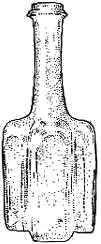 cruciform 1725 - 1750 |
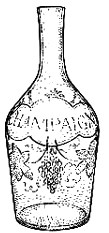 shouldered 1760 - 1770 |
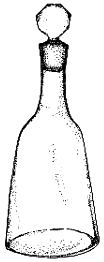 bell-shaped c 1770 |
 another bell-shape c 1770 |
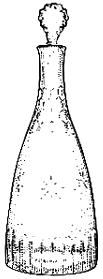 tapered c 1780 |
 club c 1780 |
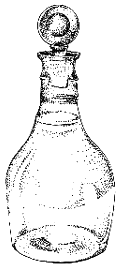 ovoid c 1780 |
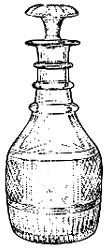 Prussian 1790 - 1830 |
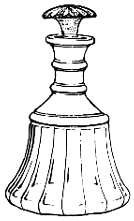 bell c 1810 |
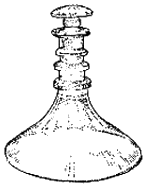 ship's decanter (with neck-rings) c 1820 |
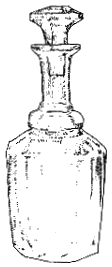 William IV decanter c 1835 |
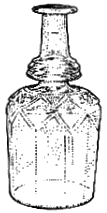 fancy (royal) 1830 - 1850 |
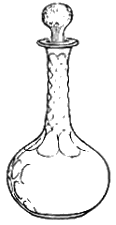 onion or shaft-&-globe c 1850 onward |
 coloured bottle decanter c 1870 |
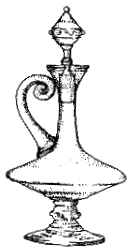 Arts & Crafts decanter c 1870 |
 kuttrolf or cluck-cluck 1880 - 1910 |
 square (for use in a Tantalus) |
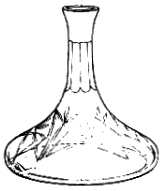 ship's decanter |
![]()
neck-rings:
 plain |
 triangular |
 triple |
 milled |
 cut |
 square |
![]()
stoppers, 1760 - 1850:
 spire 1760 - 1780 |
 lozenge 1760 - 1820 |
 faceted lozenge 1760 - 1820 |
 target or bull's-eye 1780 - 1820 |
 another target or bull's-eye 1780 - 1820 |
 flat roundel 1780 - 1820 |
 mushroom 1790 - 1840 |
 another type of mushroom 1790 - 1840 |
 faceted 1830 - 1850 |
![]()
drinking-glasses
bowl shapes:
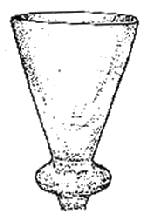 funnel or conical |
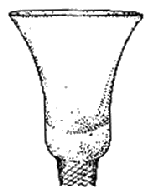 bell |
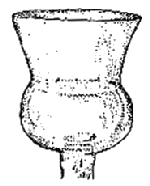 thistle |
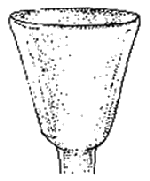 pointed round funnel |
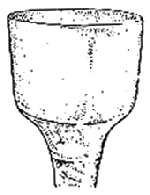 ogee |
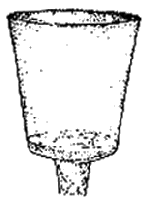 bucket |
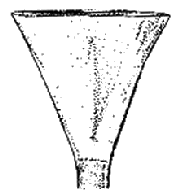 trumpet |
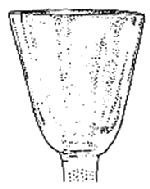 round funnel |
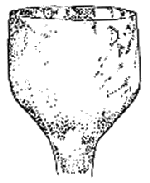 cup |
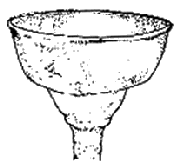 double ogee |
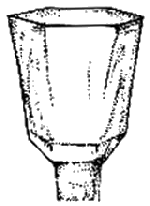 hexagonal |
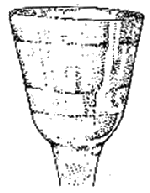 Lynn or stepped |
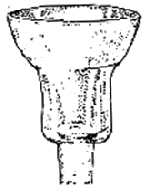 pan-top |
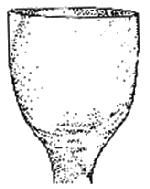 ovoid |
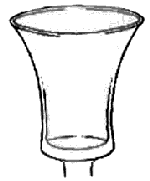 waisted bucket |
![]()
18th Century bowl shapes:
| Shape | Period |
| Funnel or conical | 1685 - 1710 (some examples to end 1700s) |
| Bell | 1685 - 1760 |
| Ovoid | 1760 onward |
| Rounded | 1830 onward |
![]()
18th Century bowl decoration:
| Feature | Period |
| Wrythen moulding | 1685 - 1800 (brief revival c 1820) |
| Copper-wheel engraving | 1725 onward (more sophisticated by late 1700s) |
| Enamelling | 1760 onward |
| Facet-cutting | 1760 onward |
![]()
stem types:
 plain |
 teardrop |
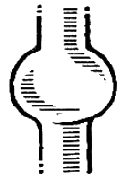 knopped |
 twist |
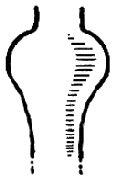 inverted baluster |
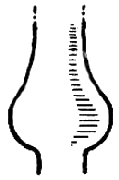 true baluster |
 bobbin |
 silesian |
 faceted |
 incised twist |
![]()
18th Century stems:
| Type | Period |
| Venetian influence | 1650 - 1700 |
| Heavy balusters | 1685 - 1710 |
| Light balusters | 1710 - 1735 |
| Balustroids | 1725 - 1760 |
| Plain & hollow | 1730 - 1775 |
| Moulded pedestal (Silesian) | 1715 - 1765 |
| Incised twist | 1745 - 1765 |
| Air twist | 1745 - 1770 |
| Composite | 1745 - 1775 |
| Opaque twist | 1755 - 1780 |
| Mixed & colour twist | 1755 - 1775 |
| Faceted | 1760 - 1810 |
![]()
knops:
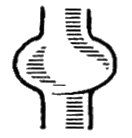 flattened |
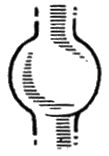 ball |
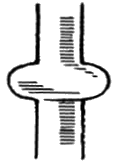 annular |
 annulated |
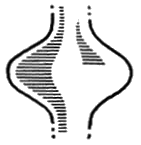 angular |
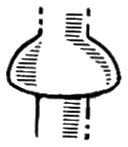 mushroom |
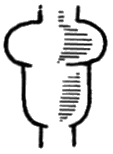 acorn |
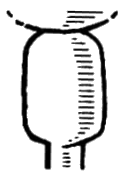 cylinder |
 drop |
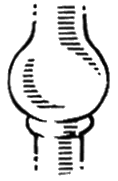 cushioned |
 egg |
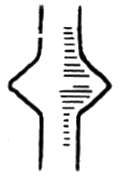 bladed |
![]()
18th Century foot types:
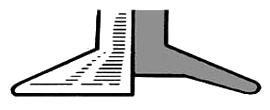 conical |
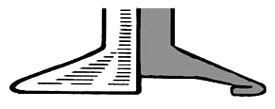 conical folded |
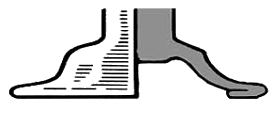 domed folded |
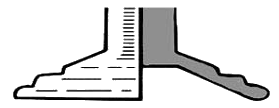 terraced |
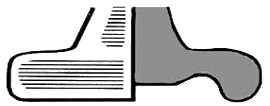 flanged |
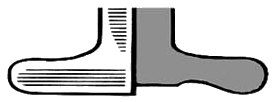 firing |
![]()
foot features:
| Feature | Period |
| Folded foot | 1685 - 1750 (brief revival c 1820) |
| Ground pontil (on faceted stem wines) | 1775 - 1810 |
| Ground pontil (on other glasses) | 1800 - c 1860 |
| Square foot | early 1800s |
| Gadget mark | c 1860 onward |
| Gadget mark disappears | c 1900 |
N.B. The presence or absence of a pontil (ground or not) is not enough evidence in itself to date a glass. I have seen good-quality glasses made in the 20th Century with ground pontils, and some distinctly Art Deco-looking glasses (probably Czechoslovakian, c 1920s) still showing gadget-marks.
The only absolute certainties are these:
2. The absence of either pontil (ground or not) or gadget-mark means the glass was made after c 1900
![]()
miscellaneous:
| Item | Period |
| Drams & cordials | 1650 - 1830 |
| Rummers | 1770 onward (thicker foot from c 1820) |
| Glass Excise Act | 1745 - 1845 (doubled in 1780) |
![]()